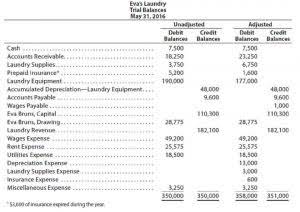Content

When businesses provide goods or services to other businesses, they often offer discounts as an incentive for early payment. These discounts can take the form of a discount allowed or a discount received. A discount allowed is a reduction in the selling price of an item, while a discount received is a reduction in the purchase price of an item. The two terms are often used interchangeably, but there are some important differences between them. Debit the cash account in a new journal entry in your records by the amount of cash you received from your customer.
Greenback provides you with 3 methods to account for discounts. However, early payment discount accounting requires you to add another account to record the money your business is “losing” for the sale discount. Let’s say you want to give customers a 2% discount if they pay their invoice within 10 days instead of the normal due date of 30 days.
Products
It is the discount offered to consumers who pay their accounts on time. It must be handled like an expense, so the discount is debited and the customer’s personal accounts are credited. A sales discount is a reduction taken by a customer from the invoiced price of goods or services, in exchange for early payment to the seller. The seller usually states the standard terms under which a sales discount may be taken in the header bar of its invoices. It is generally recorded in the purchases or sales book, but it is not entered into ledger accounts and there is no separate journal entry.
Is a discount an asset or liability?
A discount is neither an asset nor a liability on its own. Instead, a discount is a reduction in the price of a product or service, often provided to customers as an incentive to encourage sales or other favorable actions.
Accounting for sales discounts means recording correct financial entries for discounted sales. As sales discounts reduce sales figures from actual revenue, the reduction must be reflected appropriately in the account books. BMX LTD as part of its purchases promotion campaign has offered to sell their bikes at a 10% discount on https://www.bookstime.com/ their listed price of $100. If customers pay within 10 days from the date of purchase, they get a further $5 cash discount. Bike LTD purchases a bike from BMX LTD and pays within 10 days of the date of purchase. Crediting discount received has the effect of reducing gross purchases by the amount of cash discount received.
Discount Received
The income statement will show the cumulative discount amount for the accounting period. If the value of the inventory is changing, we need to target the inventory account. Currently, we have $5,000 in the Inventory account for this purchase. Therefore, the value of the inventory is not $5,000 but $4,850. We need to reduce the value of the inventory by $150 to reflect the discount received.
When a sales discount is offered to few customers, or if few customers take the discount, then the amount of the discount actually taken is likely to be immaterial. In this case, the seller can simply record the sales discounts as they occur, with a credit to the accounts receivable account for the amount of the discount taken and a debit to the sales discount account. The sales discount account is a contra revenue account, which means that it reduces total revenues. Companies that take advantage of sales discounts usually record them in an account named purchases discounts, which is another contra‐expense account that is subtracted from purchases on the income statement. If Music Suppliers, Inc., offers the terms 2/10, n/30 and Music World pays the invoice’s outstanding balance of $900 within ten days, Music World takes an $18 discount. Credit the sales revenue account by the same amount in the same journal entry.
Do you own a business?
Sales discount as a contra revenue account is expected to have a debit balance rather than the usual credit balance of revenue. This is more informative for the users of financial statements rather than when a net balance is reported only. That is, the reader of the income statement will be able to distinguish between the original amount of sales revenue generated, the sales reduction, and the resulting net amount. Sales Discounts is a contra revenue account that records the value of price reductions granted to buyers in order to incentivize early payments. Examples include Net D cash discounts like 2/30 Net 60, where a full invoice payment is due in 60 days but a buyer will receive a 2% discount in case of an early settlement within 30 days.
Now, we have all the information we need to complete the second entry. We are paying off what is owed but we are receiving a discount. We must show the purchase discounts accounts payable fully paid off, so we must debit Accounts Payable for $5,000. With cash, so we must credit Cash for the amount of cash being paid.
Accounting Entries for Sales Discounts – Scenario 2 simple examples
Here are the steps for handling a double-entry bookkeeping journal entry when selling a product or service for cash while offering a discount on the sale. Bundled deliverable discounts are sales discounts based on purchasing either multiple items, or items in a bundle. The advantage of offering discounts is that it allows businesses to generate more revenue while still providing value to customers. However, the downside is that discounts can also eat into profits if they are not managed carefully. When considering whether to offer discounts, businesses must weigh the pros and cons carefully to ensure that they are making the best decision for their bottom line. Follow Khatabook for the latest updates, news blogs, and articles related to micro, small and medium businesses (MSMEs), business tips, income tax, GST, salary, and accounting.
